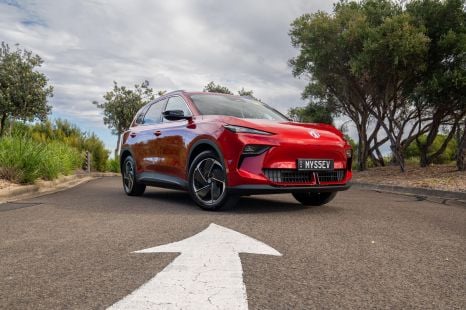

Andrew Maclean
5 Days Ago
With supercharged V6 power and lashings of luxury, the stylish Velar P380 R-Dynamic HSE rolls out the High Street Range Rover carpet in traditional fashion. But with numbered days is it worth a look before next year’s tech-laden update relegates this version to history?
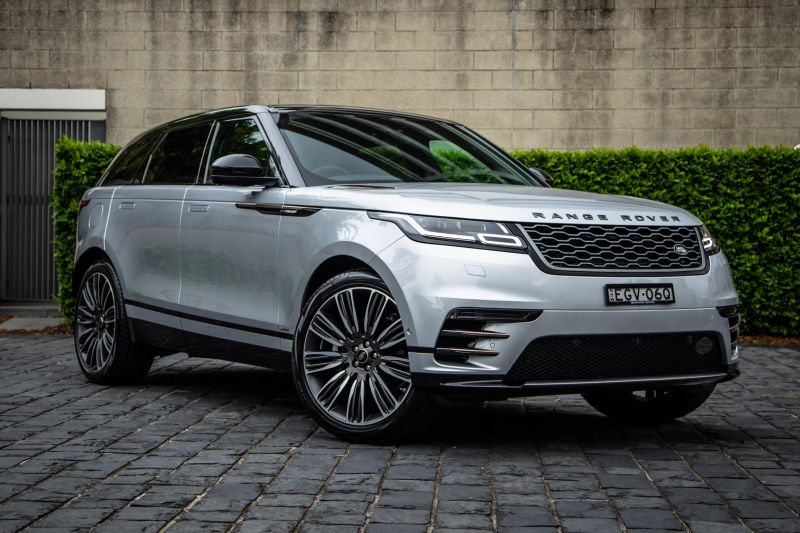
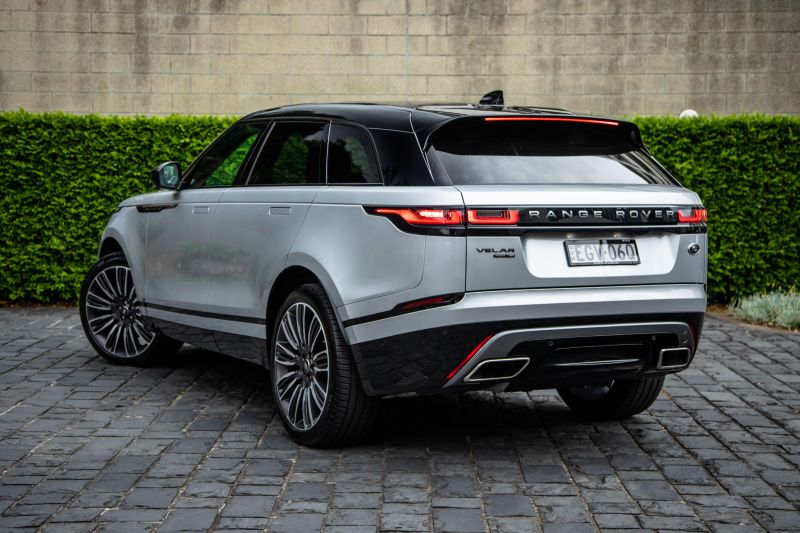

Journalist
New from
$81,647
excl. on-roads

Journalist
New from
$81,647
excl. on-roads


Journalist
New from
$81,647
excl. on-roads

Journalist
New from
$81,647
excl. on-roads
Take advantage of Australia's BIGGEST new car website to find a great deal on a Range Rover Velar.
It’s been an era of constant change for the Range Rover Velar. Last year, the marque’s achingly stylish mid-sized luxury SUV trimmed the dizzying 64-variant smorgasbord down to today’s more digestible 13-strong selection across the petrol and diesel line-up.
But not for long. A slimmer five-variant MY21 menu is available to order now for a March local arrival, bringing key updates in powertrain, tech and cabin design, if thankfully little alteration to its handsome exterior form.
The more things change…

Caught in transition is our P380 R-Dynamic HSE test machine, nomenclature code for sport-augmented, supercharged V6 motivation with a premium upmarket twist in spec. It’s the highest grade of two 3.0-litre six-pot versions currently offered, one step below the mighty supercharged V8-powered P550 SVAutobiography and combination – read our review of that here.
Next year it’ll be replaced by a P400 with a mild-hybrid super- and turbocharged (twin-charged) straight-six that relegates today’s loveable if ageing blown-V6 to history.
Do you wait? Not necessarily so. Range Rovers, even the forward-focused Velar, embrace tradition and surely a good many luxury SUV tyre-kickers are drawn to the old stuff as much as others embrace the new.

The debate amongst the peanut gallery as to where exactly the sweetest spot is in Velar’s ever-shrinking range is still rife. But after spending a week with one, this author believes the six-cylinder petrol is more fitting a heartbeat for this mid-sizer than the smaller-capacity four-bangers, the more frugal diesels, and that thumping (if uncouth) V8 Anthony Crawford happens to be so fond of.
The Velar as-tested does want for a pretty penny or three, and there’s quite a jump in outlay if you’re into the breed primarily for appearance and on-road presence alone. But the P380 R-Dynamic HSE just has all of the right stuff in the most edifying areas, right down to carefully integrating a sports theme without impacting the dignity of quiet comfort and luxury refinement.
How this version balances an air of newness with its older-school elements – that supercharged V6, particularly – presents a particular charm that may well wane in forthcoming tech-savvier 2021 guise.
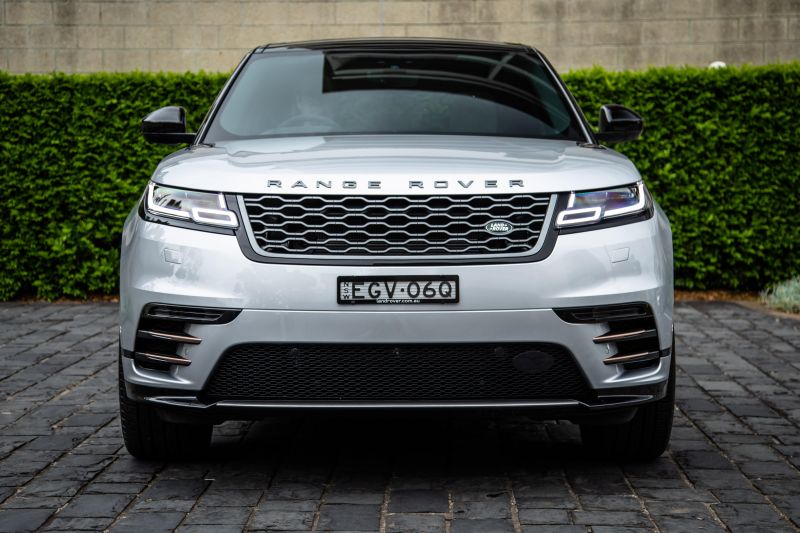
At $128,000 before on-roads, the P380 R-Dynamic HSE is pricey as a clean-skin for a marque known for offering lots of costly personalisation options. You can get a plainer, non-R-Dynamic version for around $6000 cheaper but given from next year all Velars will have R-Dynamic addenda, well, why would you go without?
That’s a fair hike from the circa-$82,000 entry four-cylinder P250 S. But equally, you’ll need to find another $50,000(ish) to step up to the mighty bent-eight P550 SVAutobiography Dynamic (around $177,000 list).
For the $128,000 ask, you could also slip sideways into the D300 R-Dynamic HSE diesel for around the same coin, or up the size and trim the luxury appointments for a Range Rover Sport D300 SE ($123,000 list) if you find its more classic vibe equally appealing.
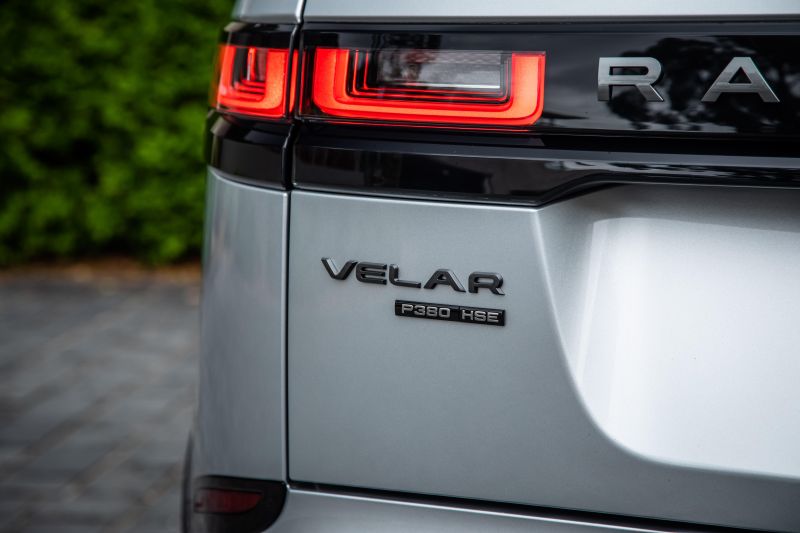
There’s a bewildering array of nice SUV alternatives out there for the money, including diverse newcomers such as the highly stylised and more affordable Genesis GV80 and Audi’s electric E-Tron, say, if you stretch the budget a bit. And our test car certainly does.
Options fitted here include the sliding panoramic glass roof ($4370), Dynamic Handling Pack ($1710), nine-spoke 22-inch wheels ($1690), and few other things such as Silver metallic paint ($1780), Black contrasting roof ($1260), privacy glass ($890), a fixed rear recovery eye ($286) and Driver Assist pack (360-degree camera, adaptive cruise with steering assist, $2223) that perhaps ought to be standard fitment for a high-spec luxury SUV.
Outside of Fuji White, there are seven metallic ($1780) and three premium metallic ($3550) finishes to choose from, as well as a choice of three different up-sized 22-inch wheel designs ($910 to $1690).


Outside, this Velar variant gets standard-fit air suspension, 21-inch wheels, R-Dynamic appearance tweaks, those neat signature pop-out door handles, LED lighting with Matrix-style headlight trickery, rain-sensing wipers, auto-dimming/heated/power-folding mirrors, an acoustic laminate windscreen, a powered tailgate with gesture control, front and rear sensors along with one-touch electric windows all round.
Befitting the high HSE grade, this version loads 20-way electric front seats with heating, cooling and massage functionality, extended leather finish, keyless go, an auto-dimming rear-view mirror, lots of metal brightwork, metallic pedals, a digital driver’s display, and a reversing camera. Adaptive cruise control (sans steering assist), powered child locks and Park Assist are also standard.
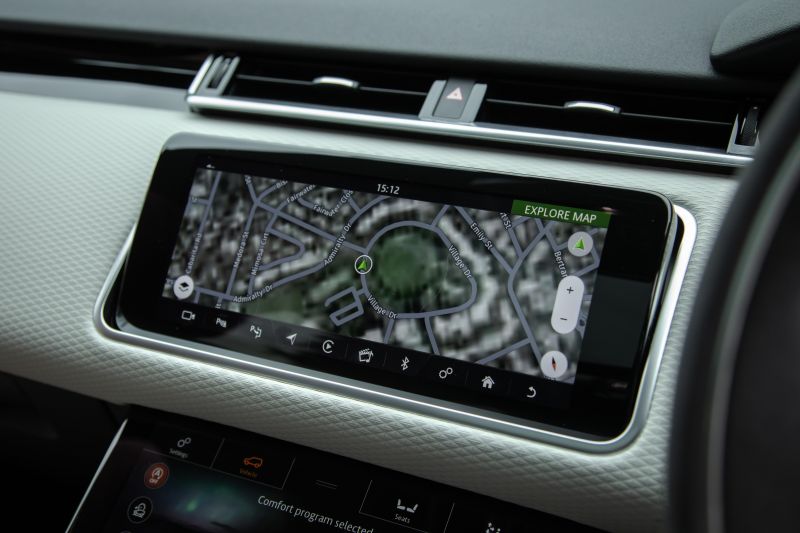
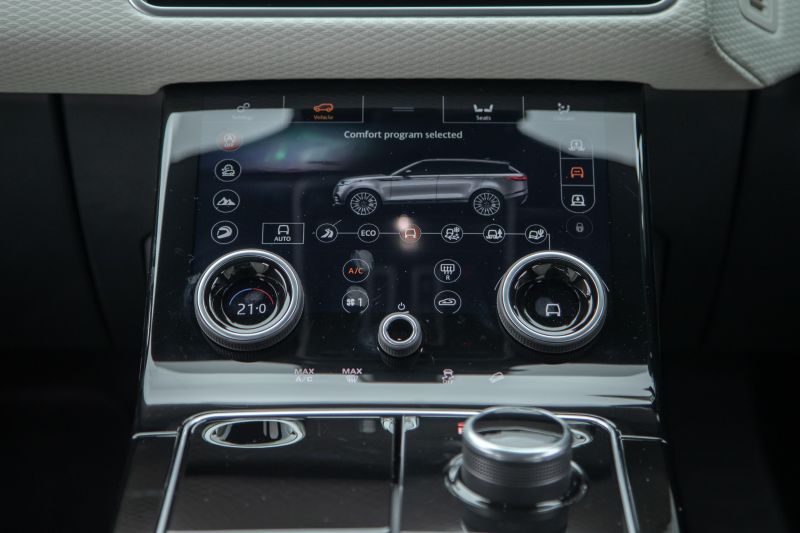
Key to the cabin’s jewellery is the Touch Pro Duo that includes the nifty stacked 10.0-inch glass touchscreens with analogue dial integration for dual-zone climate control and the various vehicle functions.
The infotainment side of the system gets its own dedicated 10.0-inch touchscreen and bundles in features such as sat-nav, Pro Services with 4G wi-fi hotspot, wired Apple CarPlay and Android Auto, DAB+, voice control, and 825-watt, 17-speaker Meridian surround sound.
Dual USB and 12V outlets feature, as does a sim-card port as a connectivity option for wi-fi.
For a deep dive on Touch Pro Duo and InControl functionality check out our dedicated review here.
The Velar range was rated five stars by ANCAP in 2017 based on testing conducted by Euro NCAP that same year. The assessment results cover all available variants in Australia.
It scored a high 93 per cent for adult occupant and 85 per cent for child occupant protection, with 74 per cent for vulnerable road users and 72 per cent for safety assist systems.
Features include front, side and curtain airbag coverage, all-speed autonomous emergency braking with pedestrian detection, forward collision warning, lane departure warning, lane-keeping assistance, blind-spot monitoring and rear-cross traffic alert. Tyre pressure monitoring and traffic sign recognition with adaptive speed limiter are also fitted.
You do have to stump up for the optional Driver Assist Pack to add adaptive cruise that integrates steering assistance (even though adaptive cruise and lane-keeping feature separately as standard-fit functions).
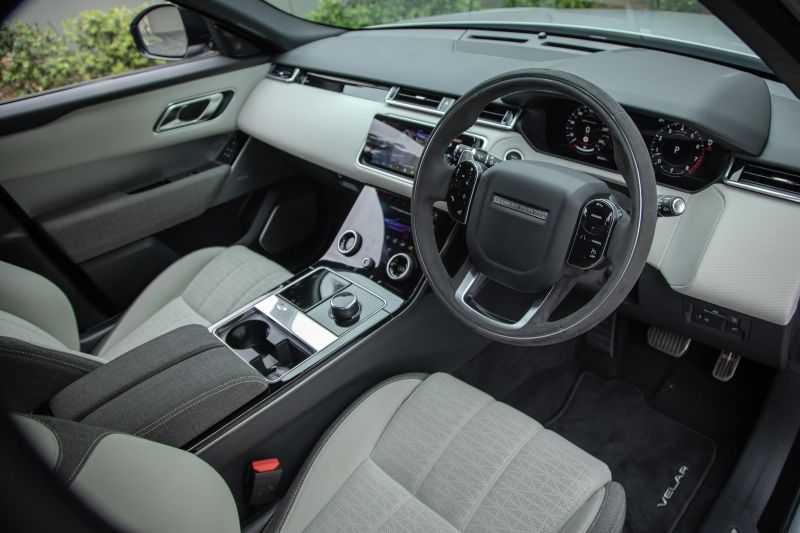
After the promise of its handsomely sharp exterior, the Velar’s cabin certainly doesn’t let the package down, bringing with it a fine sense of occasion.
Our test car swaps out the Windsor leather for fetching Dapple Grey ‘premium textile’ (aka fabric) with Light Oyster suedecloth, bringing a sense of richness and textural variety that works a treat to this reviewer’s eye.
The quilted effect across the dash fascia and door inserts is classy and inspired, with some of most ornate and interesting door trims in the business. And, the split ‘textile’ armrest is delightful.
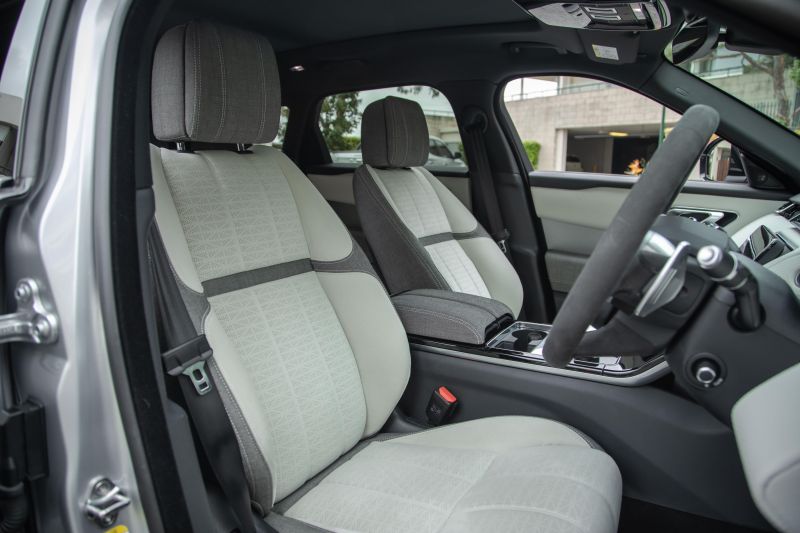
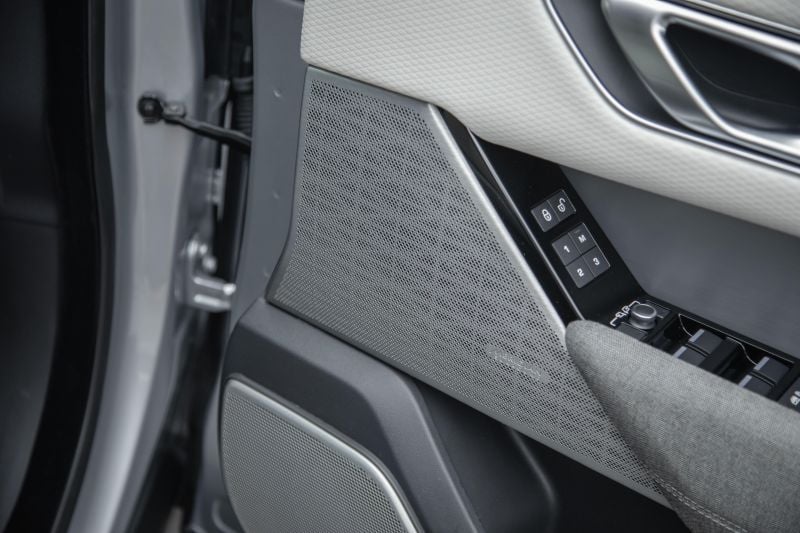
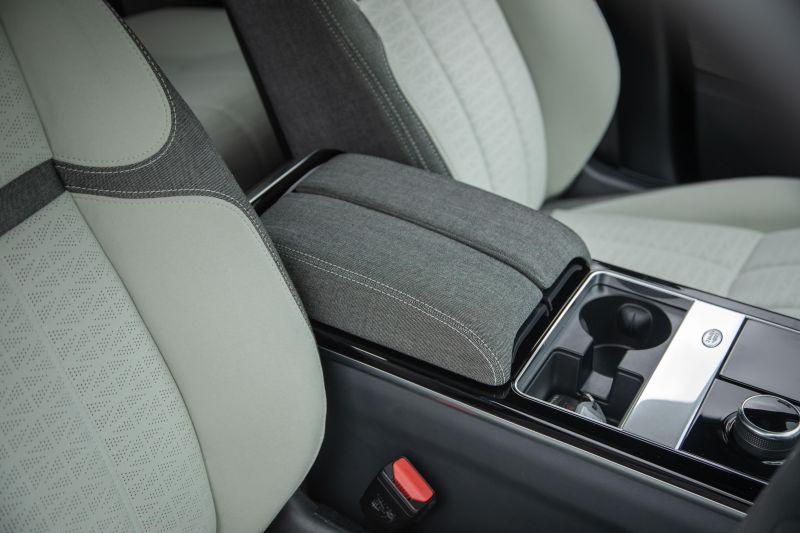

Light, airy, visually diverse and downright interesting, the Velar interior mightn’t be to everyone’s taste, but the feel-good factor is through the panoramic glass roof.
Land Rover clearly focuses on presentation, and the execution and finish of the cabin generally meet its aims. The Touch Pro Duo screens are pleasingly sharp, the signature motorised rotary transmission controller – to be omitted in the 2021 update – maintains its neat party trick, and all of the metal-look details genuinely look metallic, even if some such as the handles and door inserts betray their plastic origins to touch.
Little of it, such as the column stalks and door controls, seem conspicuously part-binned from the wider Jaguar Land Rover family. That said, the digital instrumentation content is of a look and design so different to that of the infotainment unit – especially the navigation mapping – it looks to be supplied from a whole other car manufacturer. It certainly doesn’t give German rivals much pause for envy, but it’s clear and legible and offers a modest degree of personalisation.
The front seats are beaut if a little too firmly padded, though they do with some of the most aggressive back massaging action out there – it’s just a shame they’re bit noisy in operation inside the otherwise serenely quiet cabin ambience. I’ve never warmed to this oddball steering wheel design, as nicely trimmed in suedecloth as it is, and perhaps unsurprisingly it’s going the way of the dodo in next year’s update.
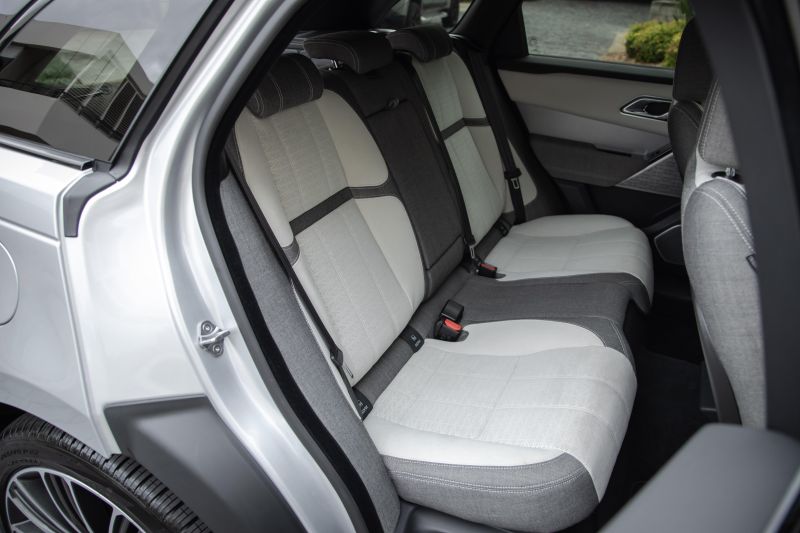
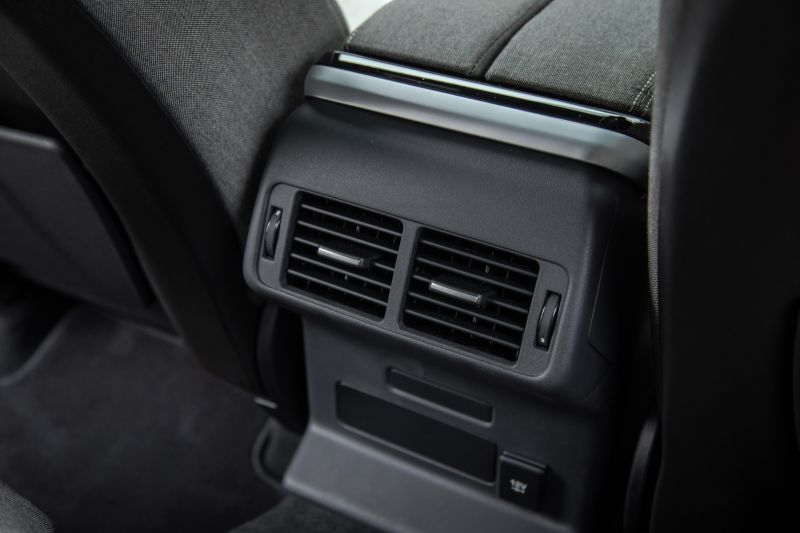
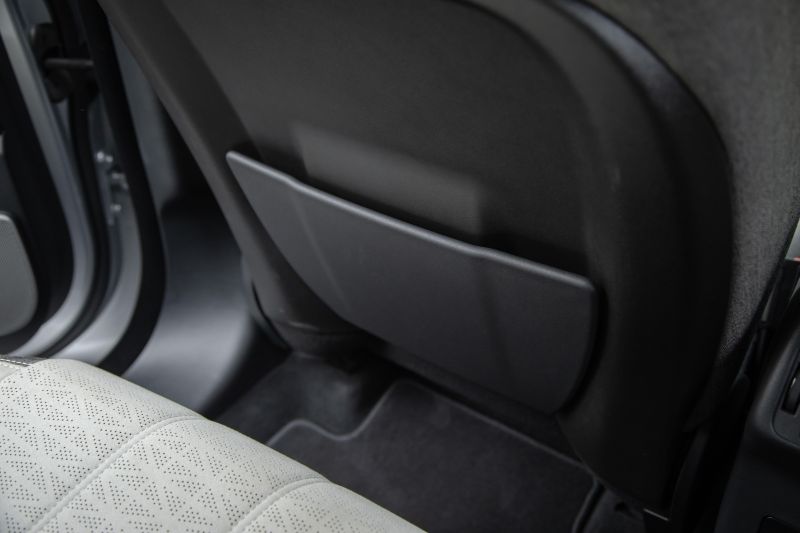
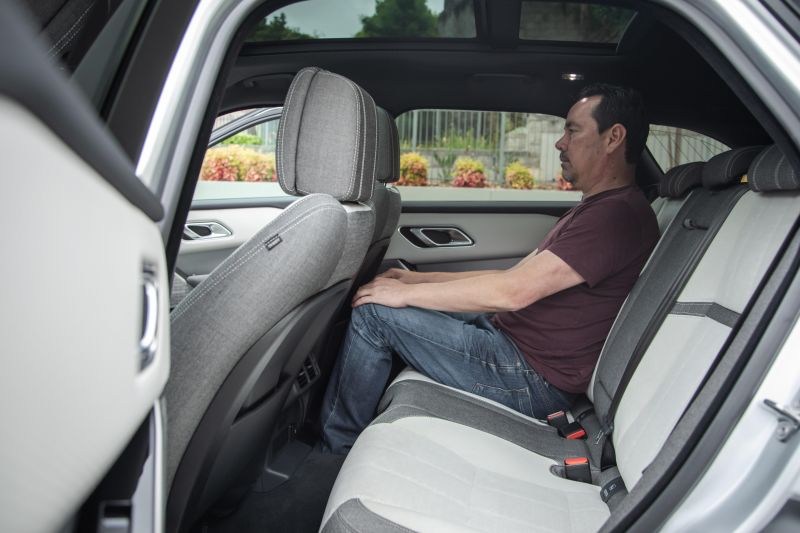
The Touch Pro Duo format is mostly good. It looks great, its interface is reasonably straightforward though it does demand some familiarity to negotiate quickly and without distraction. Much like we found in our dedicated review, the actual response to finger pressure is a little hit and miss, while access to features through the steering wheel controls is clumsier than it need be. The Meridian sound system, though, is rich and fulsome.
For a supposedly mid-sized offering, the Velar does feel on the petite side of certifiably large. It mightn’t have quite the cabin width of an alternative one-segment larger, but it’ll feel big and roomy enough for some buyers (and it’s still a tight squeeze in your average urban supermarket parking space).
Its mid-to-large roominess pays good dividends in row two, with properly adult-sized space offering generous four-up comfort and really only begins to feel a touch limited in width three adults abreast. The rear 40:20:40-split-fold seating is also shapely and supportive, the rear only let down by a lack of device power outside a sole 12-volt outlet, though it does fit rear vents (with proper four-zone climate control offered as an option).
The Velar offers 558 litres of bootspace with good depth and nice square proportions. Features here include an added 12V outlet and four high-mounted grocery bag hooks, while a 19-inch space saver spare sits under the low-set floor panel.
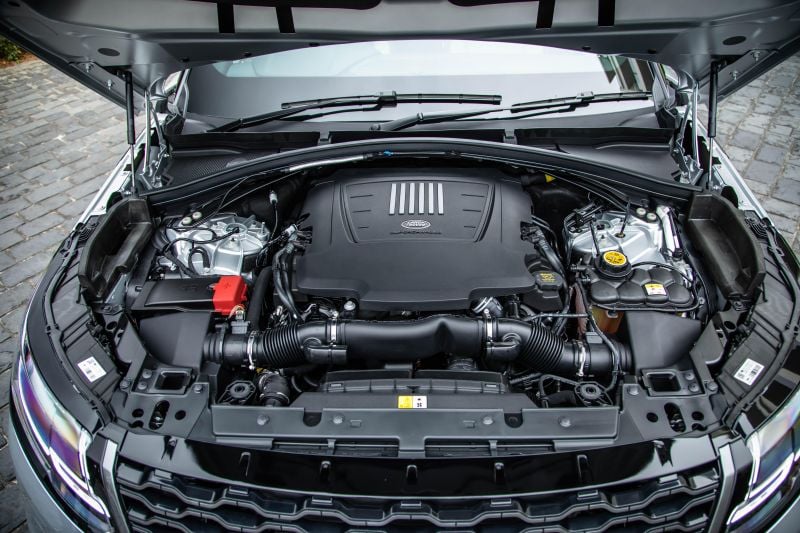
Propulsion is provided by JLR’s evergreen 3.0-litre supercharged petrol V6, producing 280kW at 6500rpm and 450Nm at a quite high 4500rpm. The engine is paired with a ZF-sourced eight-speed automatic and all-wheel drive.
Land Rover claims a combined consumption figure of 9.4L/100kms, which from our assessment seems quite genuine. Even around town the V6 Velar happily hovered around the mid-10L mark.
The P380 spec fits a larger set of front brakes than the four-pot Velars and those 22-inch rims are shod with broad 265mm Pirelli Scorpion Zero tyres, so there’s plenty of grip and stopping power to match R-Dynamic expectations.
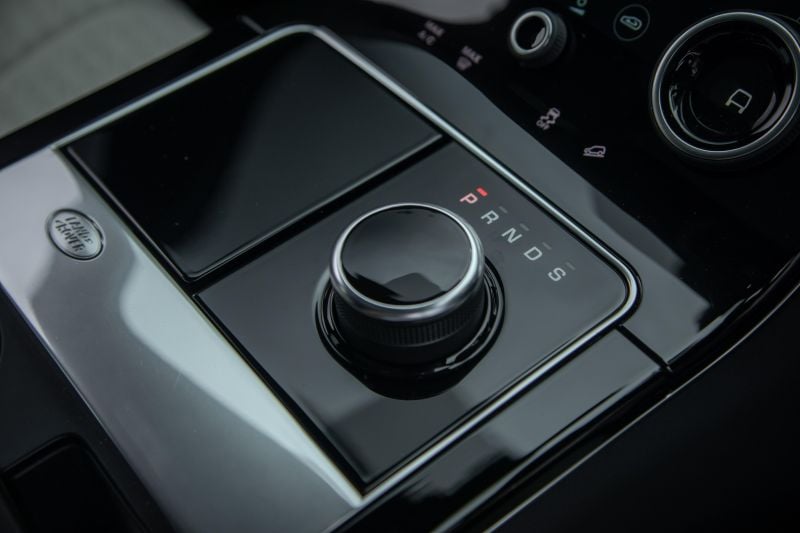
Indeed, the Dynamic Package optionally fitted here adds configurable dynamic calibration and some degree of all-terrain cleverness, though only the foolhardy would venture too far off onto beaten tracks with that 22-inch rolling stock. It does torque vector via braking though no mechanical rear limited-slip gear is fitted.
Its maker claims it’ll march to triple figures from a standstill in just 5.7 seconds, which is certainly isn’t hanging about.
The jury is out on this though, by the seat of the pants, it feels as if you’d need a stiff tailwind to get Velar P380 comfortably into the fives. When it comes to pulling power, braked towing is rated at up to 2500kg.
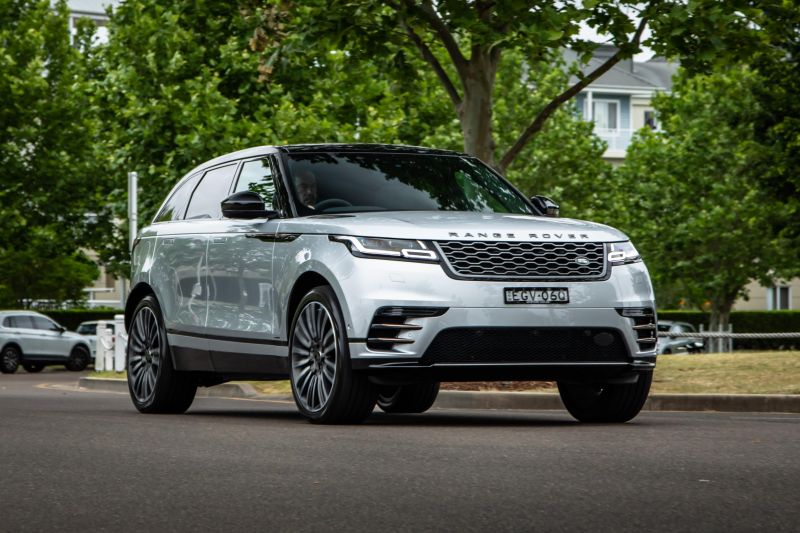
The supercharged bent-six might appear old hat against the forthcoming dual-forced mild-hybrid straight six, but it just really fits the bill nicely in a Velar-sized package.
It lacks the throaty growl it otherwise flaunts fitted in some Jaguar models and frankly, here in Range Rover form, its more polished and muted execution is a better fit. It’s smooth and quiet with just a faint whirl from the supercharger if only when you fully open up the taps.
Off the mark, with moderate throttle, there’s a firm swell of torque with instant response and lovely, oh-so-supercharger-like linearity. The engine seems tuned for friendly and satisfying urban cut and thrust because the only time it seems caught wanting is during instant kick-down acceleration on a motorway, where power delivery runs a little flat at the top end of the rpm range.
The eight-speed does the engine many favours, too, slipping through ratios serenely when it needs to while sharpening up nicely yet cleanly when the powertrain is called to march.
There’s little doubt the fours and diesels in range are kinder on consumption and the SVA’s V8 would bring broader grins, but the almost old-school leanings of this blown-six powertrain format just really suit the Velar’s ‘strong and silent’ character perfectly. And I’m as curious as anyone to see whether its forthcoming ‘smarter’ replacement design is quite so convincing and satisfying.
The air suspension, too, offers a nicely struck ride and handling balance. It manages the vertical movement of those hefty 22s with aplomb, ironing out the small stuff and deftly rounding out big hits, while maintaining dignified composure if with a bit of floatiness at times. It’s otherwise tied down well enough to avoid the slightly sickening wobble that seems to afflict too many big-dollar air-suspended premium SUVs.
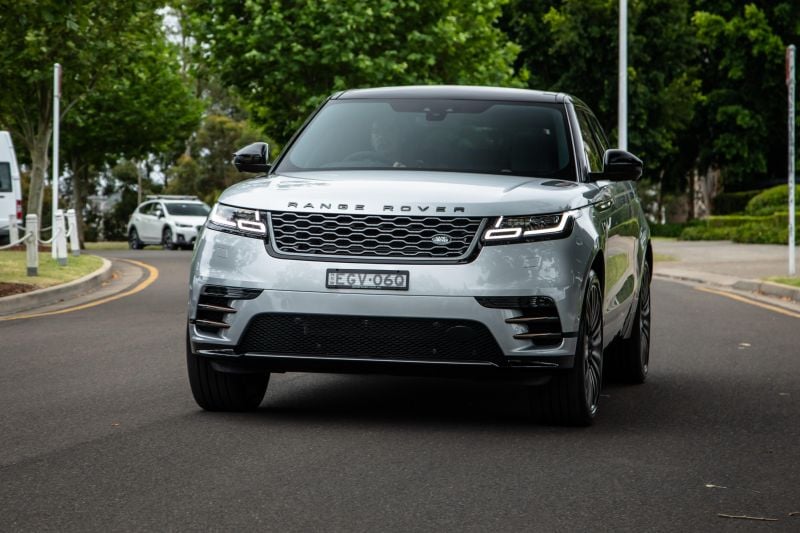
Does it put the ‘dynamic’ in R-Dynamic? I don’t know and frankly I don’t really care – namesake apart, chucking Velar through a succession of tight back country curves just doesn’t seem to suit this vehicle’s overall vibe.
It is, however, a fine grand tourer and there’s enough muscle in the chassis to yield poise and predictability when negotiating corners at a reasonable clip.
On the move, it’s impressively quiet and as relaxing to cruise as you might hope, its only markdown the slight drone of tyre noise over some surfaces at speed with the occasional low and muted thud across expansion joints.
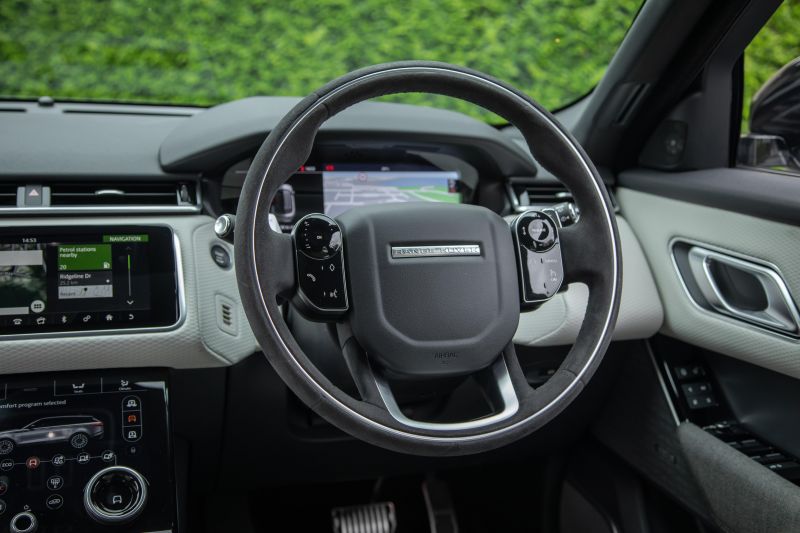
The Velar is officially covered by a slim three years of warranty with only 100,000km of coverage. Not great in 2020. But, until December this year warranty coverage for Velar (excluding SVAutobiography) is increased to five years and unlimited kilometres.
The five-year/130,000km servicing plan costs a reasonable $2250, which is $300 higher than the four-cylinder versions (five years/102,000km) if with a lengthier 26,000km intervals between services. The pre-paid plan brings with it five years of roadside assistance.
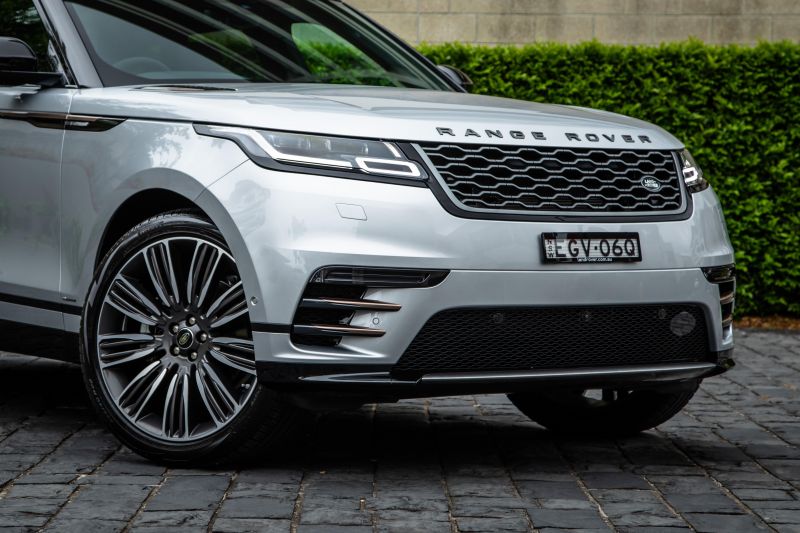
The P380 R-Dynamic HSE isn’t the most pragmatic choice in the Velar range, let alone the wider Range Rover stable or premium SUV landscape. It’s pricey even before you glance at the lengthy options list, not the most technically advanced choice and due – in this particular configuration – to be put to pasture within six months.
As sensibility-driven choices go, this isn’t in the running.
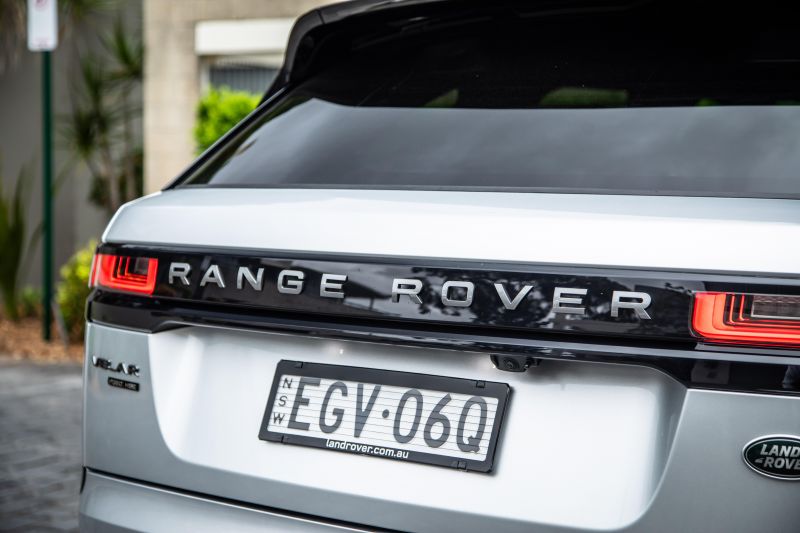
But it delivers handsomely as an indulgence-dipped feel-good machine. And, it backs up its High Street posturing with a classy on-road experience. That it could execute a few areas a little better doesn’t negatively impact its undeniable mojo.
There’s just something inimitable and special about the Range Rover breed – a sense of grandeur and prestige – that oozes out of this particular Velar variant.
Take advantage of Australia's BIGGEST new car website to find a great deal on a Range Rover Velar.


Andrew Maclean
5 Days Ago
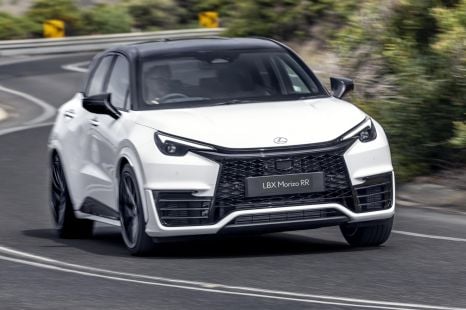

Josh Nevett
8
5 Days Ago
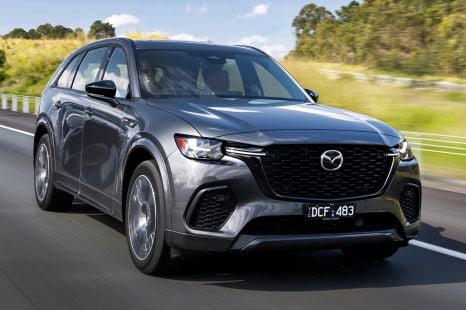

Jack Quick
7.9
4 Days Ago


Neil Briscoe
3 Days Ago


William Stopford
8.5
2 Days Ago
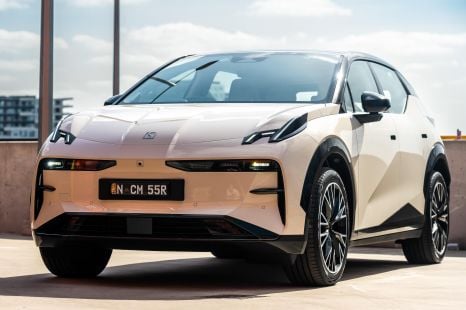

James Wong
7.9
15 Hours Ago